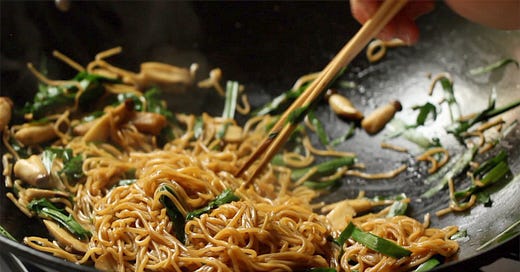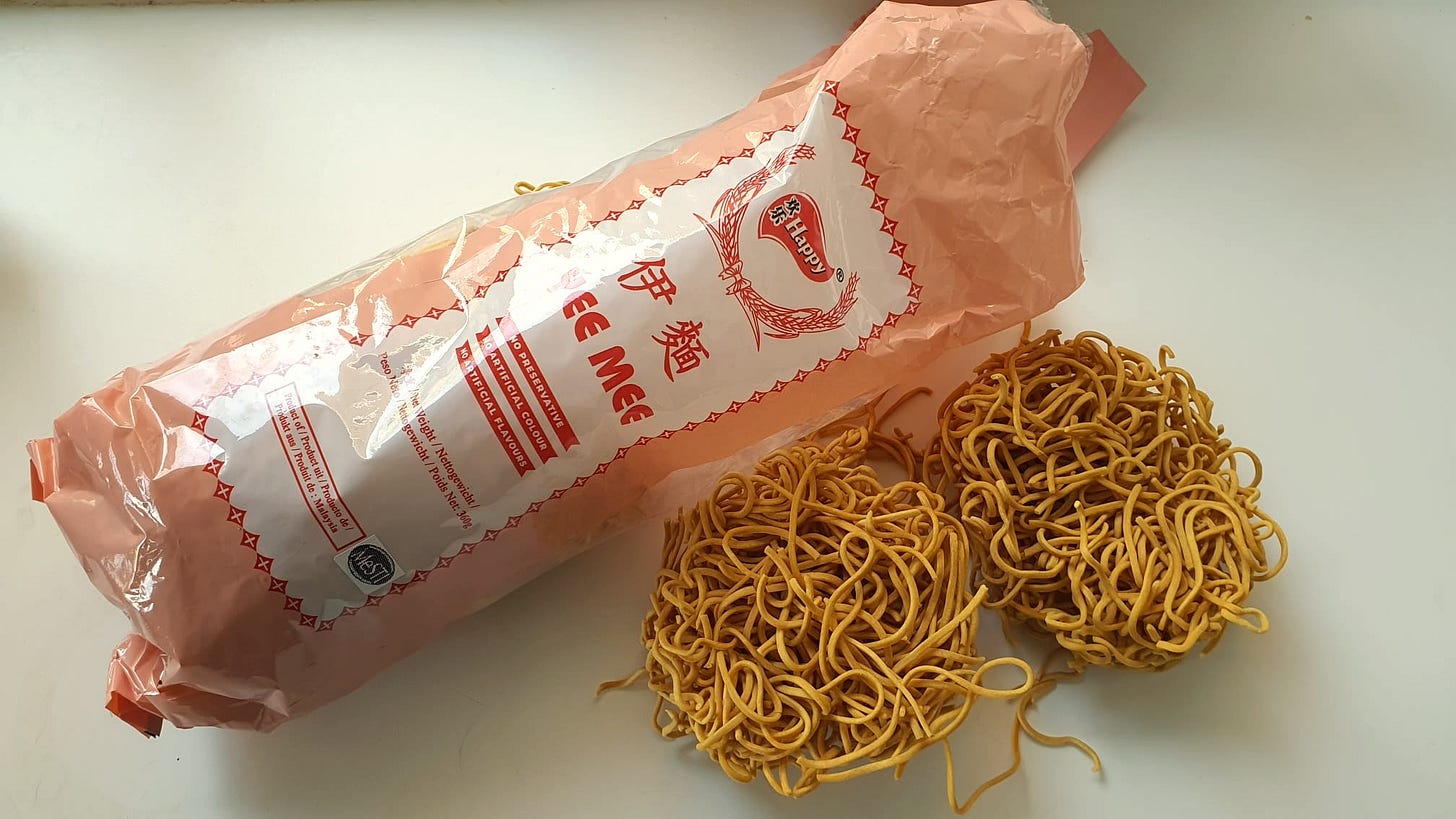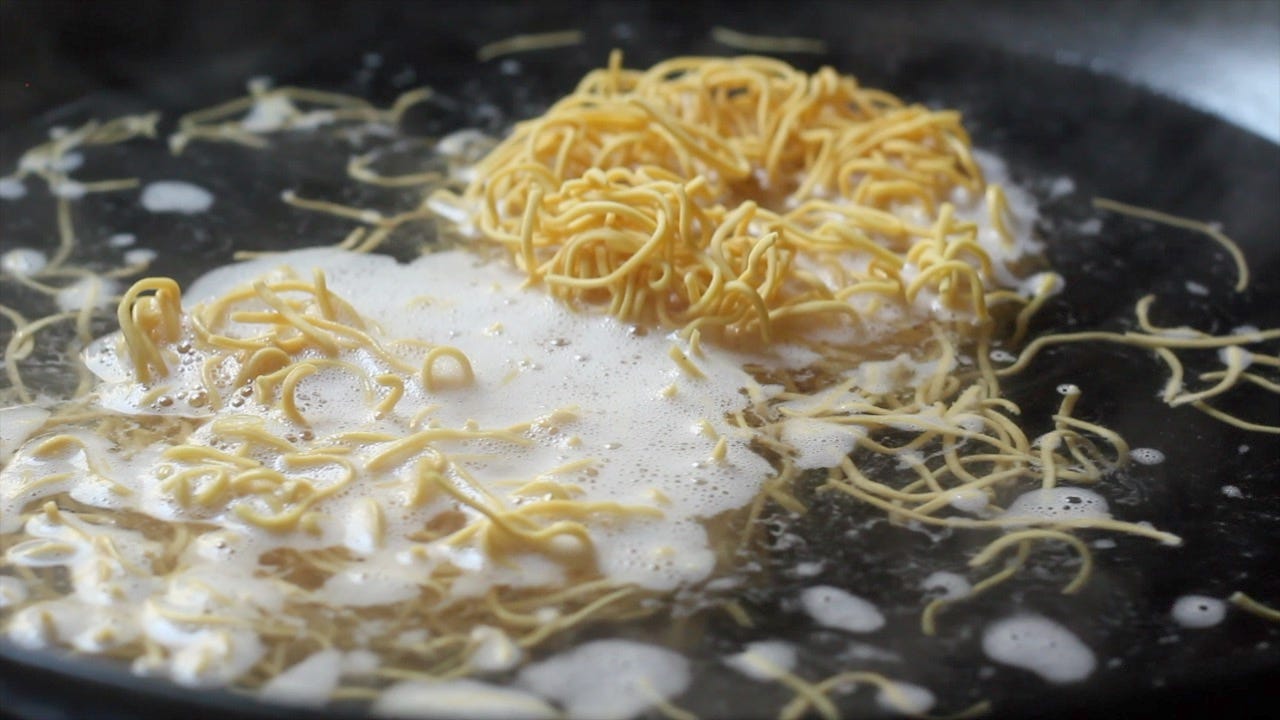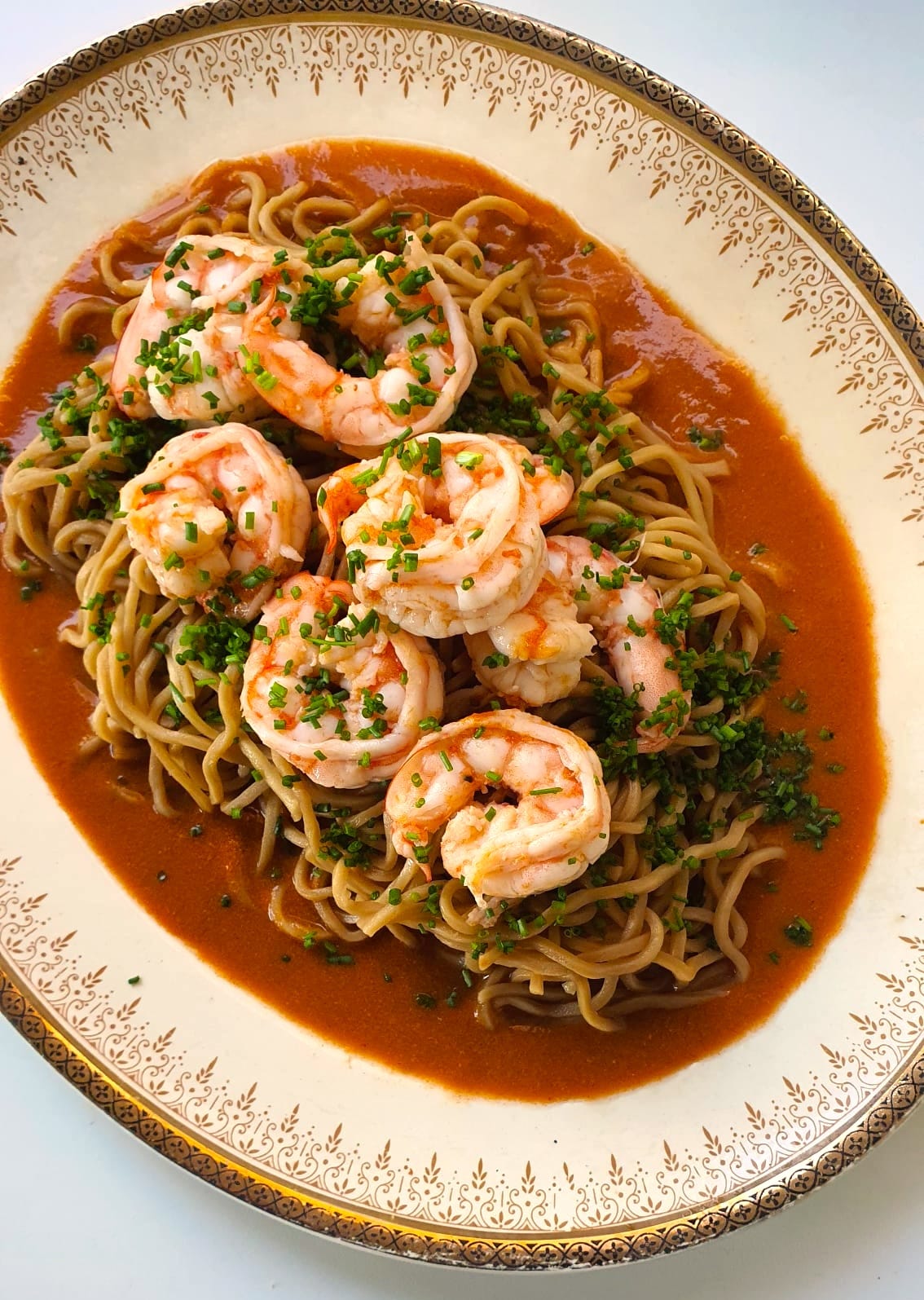Welcome to Singapore Noodles, a newsletter dedicated to celebrating Asian culinary traditions and food cultures. Every week, you’ll be receiving a tasty mix of stories and recipes straight in your inbox. It’s great to have you here!
Happy March! We’re officially in springtime here in the Netherlands, and it’s doing wonders for my spirits. I’d forgotten how lovely it is to feel the warmth of the sun on your skin, or to see little crocuses in bloom all over patches of grass. What has also brought me fulfilment lately was seeing my recipes and writings published on two publications I love: my curry chicken for Vittles (recipe is paywalled but story is free to read), as well as my take on the famous Lana chocolate cake and tea eggs for Serious Eats.
As we head into warmer days, stews, soups, and braises are making less of an appearance in my kitchen. Recently, I’ve been whipping up lots of eefu noodles, a pantry staple for me. These noodles were reportedly invented during the Qing dynasty, when a cook working for a government official with the surname of Yi (or Ee, depending on how the Mandarin word is phoneticised) accidentally dropped some noodles into hot oil. Running low on time, he proceeded to serve them in broth as originally intended and they were a hit. Here are two ways to serve eefu noodles — one a classic approach, and the other a fun, fusiony take — which would make nice additions to your mid-week cooking arsenal!
Enjoy,
Pamelia
EEFU NOODLES 101
What are eefu noodles: Eefu noodles are wheat noodles that have been deep-fried within round or rectangular rings or moulds so that they form cylinders of crispy noodles. This creates a spongy, slightly chewy texture and a rich flavour. Because of the frying process, these noodles are more resistant to breaking compared to other types of noodles. The long, unbroken strands are why the noodles symbolise longevity, and are typically served at Chinese wedding banquets.
Shopping for eefu noodles: The noodle aisle of an Asian supermarket can be confusing and dizzying in its range. Visually, it might be difficult to tell eefu noodles apart from egg noodles that are yellow and similar in shape, so the best thing to do is to look out for the names of the noodles (eefu noodles, yī fǔ miàn, 伊府面; or yi mian, yee meen, yī miàn, 伊面) on the packaging. Failing that, look for noodles that are a rich golden brown rather than pale yellow.
Cooking with eefu noodles: The trick to preparing eefu noodles is to blanch them quickly in boiling water before stir-frying or braising. This rids the noodles of excess oil from the deep-frying process. When boiling, undercook or cook them to the point of being al dente so that they don’t overcook. Optionally, you can rinse them with cold water to stop them from overcooking and remove excess starch.
BRAISED EEFU NOODLES
Braised eefu noodles is a classic dish that is typically served at the tail end of Singaporean Chinese weddings. I especially appreciate how light the texture of the noodles are — even when I am full from the earlier courses of steamed fish and roast chicken, I still manage to finish the entire bowlful because it doesn’t weigh you down.
This dish is traditionally a vegetable-forward one, typically made with Chinese chives or yellow chives and mushrooms.
Chinese chives, also known as garlic chives, are pungent and more substantial than Western chives. These tend to be regarded as a vegetable in Chinese cooking rather than a herb. Yellow chives are Chinese chives that have been deprived of the sun as they grow. Just like white asparagus, the lack of exposure to sunlight prevents photosynthesis, resulting in a pale yellow appearance and a more delicate flavour.
Mushrooms: Straw mushrooms are very common in this dish but king oyster, oyster, and shimeiji mushrooms work well.
Even though it is vegetable forward, eefu noodles is not often vegetarian as cooks tend to add chicken stock or solefish powder (from dried solefish bones). My entirely vegetarian version uses miso paste, which provides the umami punch, as well as spring onions, which is much more accessible worldwide.
RECIPE
Serves 2 to 3; vegan (assuming that the eefu noodles you’re using are eggless, which may or may not be the case!)
6½ ounces (180 g) eefu noodles
2 tablespoons oil
3 slices of ginger
7 ounces (200 g) king oyster mushrooms, sliced lengthwise in half and cut into thick slivers
2½ ounces (70 g) spring onions, cut crosswise into 2 inch (5 cm) lengths then sliced lengthwise into long thin strips
3 tablespoons miso
1½ tablespoons vegetarian oyster sauce or mushroom stir-fry sauce
2 teaspoons dark soy sauce
1 tablespoon Shaoxing wine
½ teaspoon sugar
1 teaspoon sesame oil
Bring a medium pot of water to a boil on high heat. Blanch the eefu noodles for 1 to 2 minutes, or just until the noodles loosen but still retain a bite. Drain the noodles in a colander, then rinse with cool tap water to stop the noodles from overcooking.
Set a large saucepan or wok on high heat and add the oil. When the oil is hot, add the ginger and mushrooms. Cook the mushrooms, stirring occasionally, until they are lightly browned. Add the spring onion and fry for 30 seconds, or until fragrant.
Dissolve the miso in 1 cup (240 g) water and add it to the pan with the vegetarian oyster sauce or mushroom stir-fry sauce, dark soy sauce, Shaoxing wine, and sugar. Bring to a boil.
Add the noodles and cook on high heat, stirring with chopsticks occasionally, until the noodles absorb the liquid.
Turn off the heat, then add the sesame oil and toss it through the noodles. This will add a nice shine. Serve.
PRAWN BISQUE EEFU NOODLES









